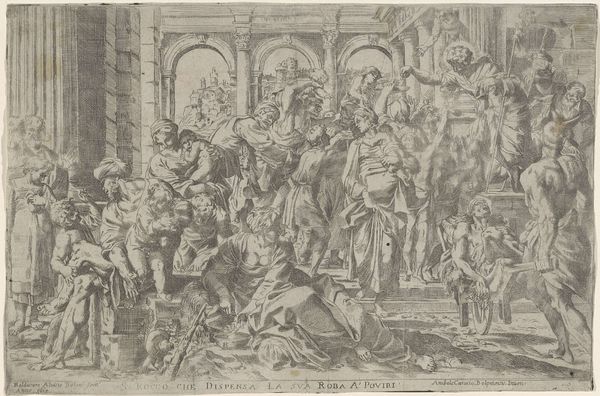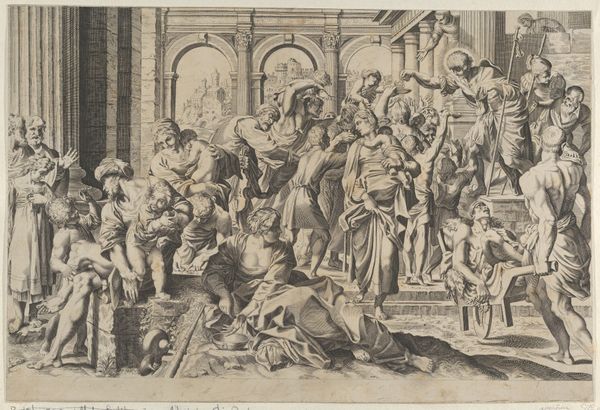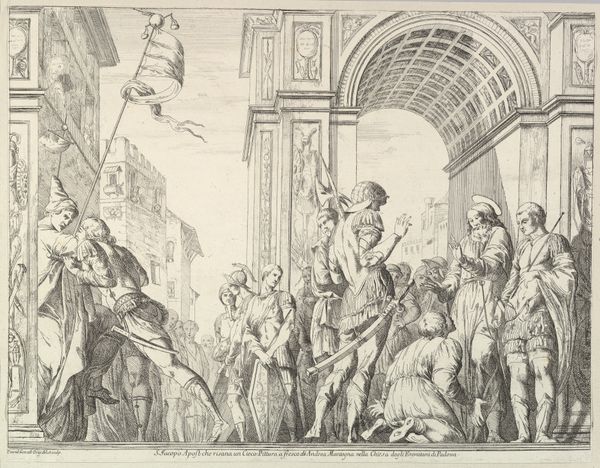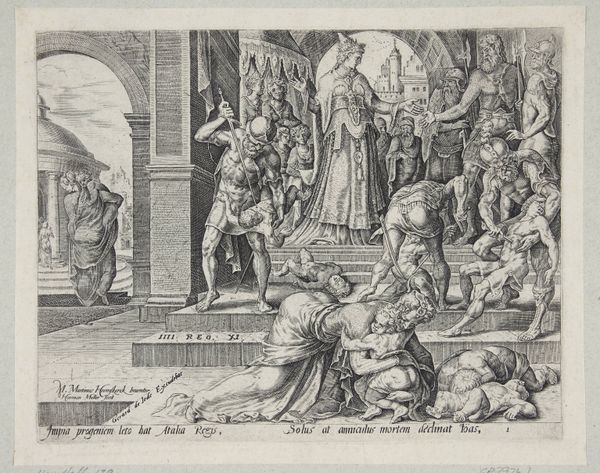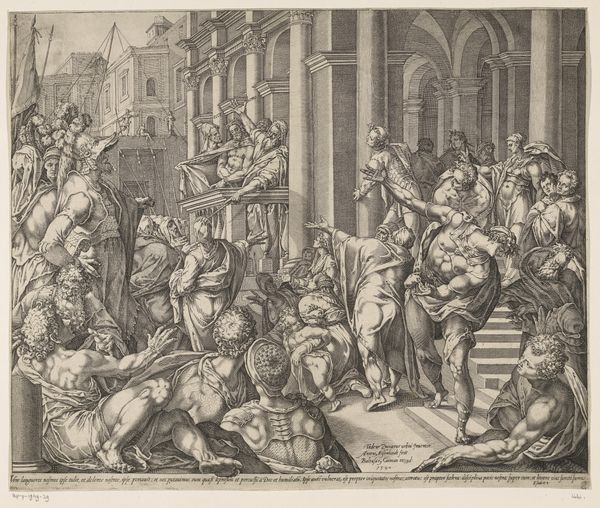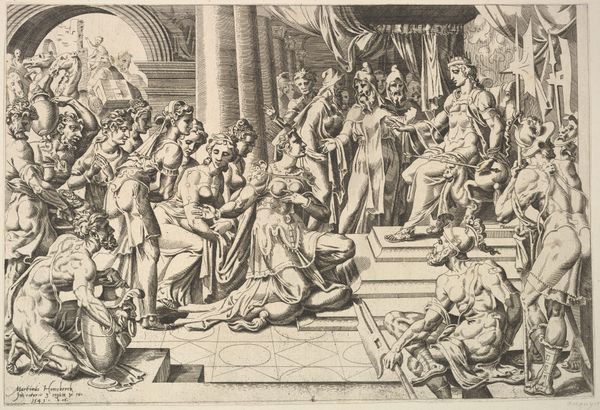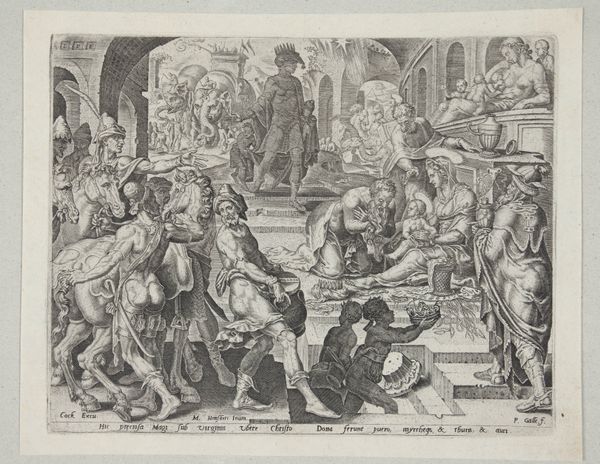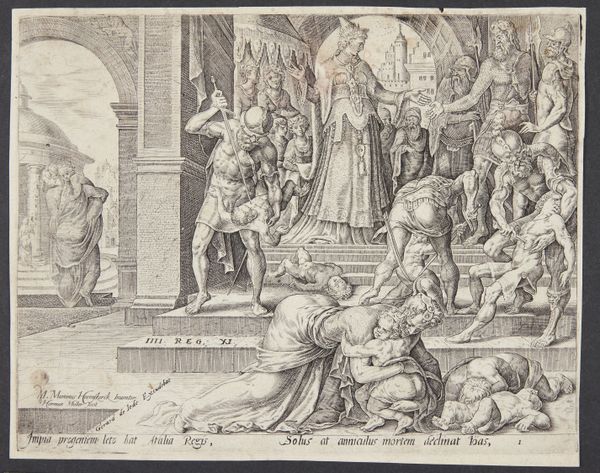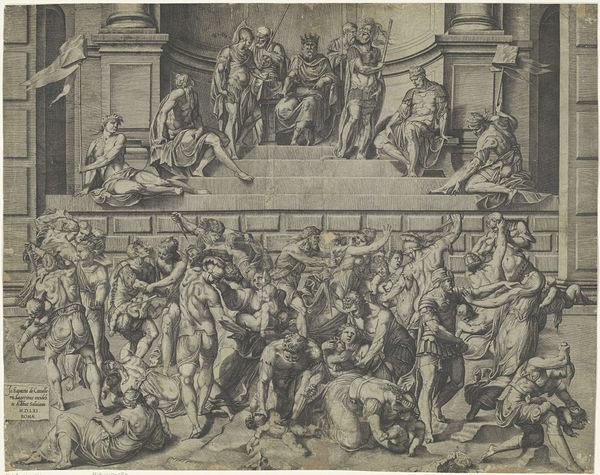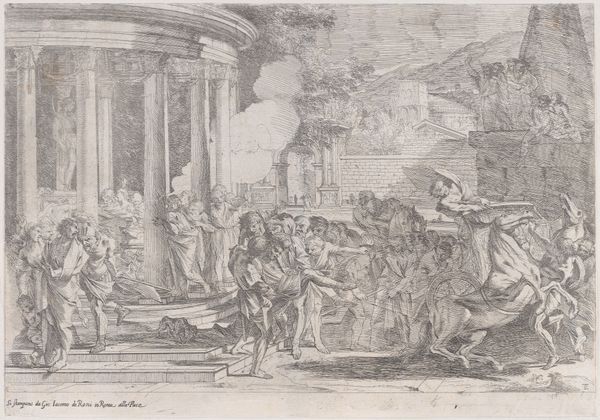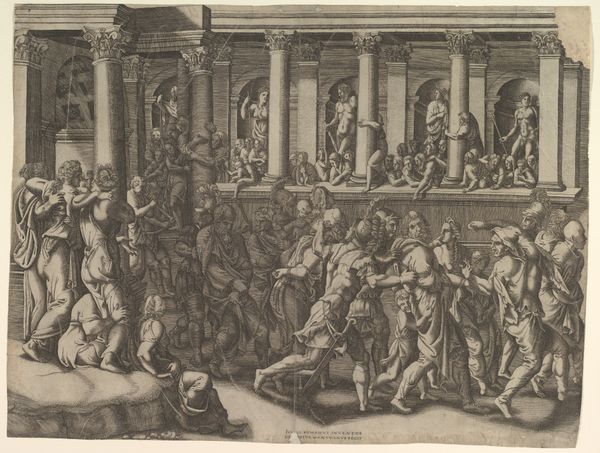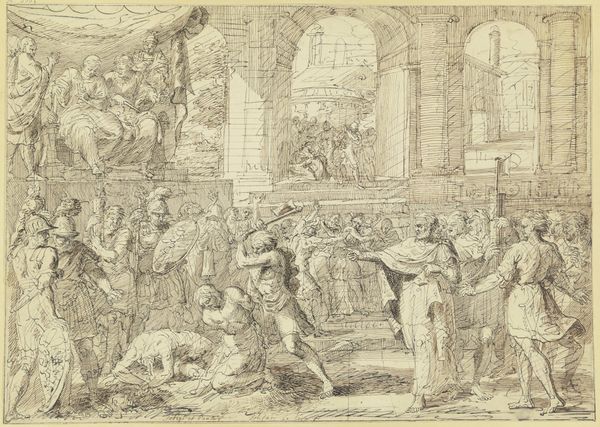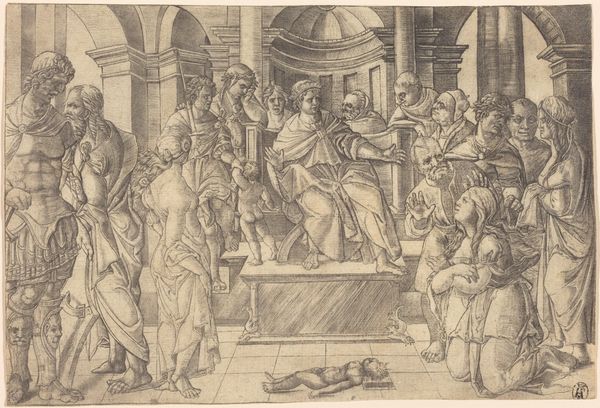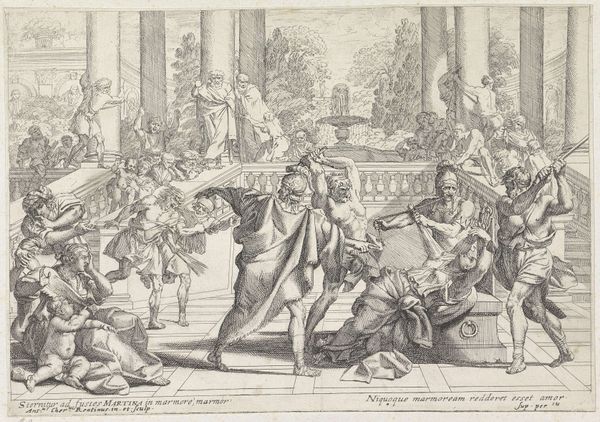
Saint Roch at right distributing alms to a group of people gathered around him, after Annibale Caracci 1590 - 1610
0:00
0:00
drawing, print, ink, engraving
#
drawing
#
pen drawing
# print
#
figuration
#
ink
#
history-painting
#
italian-renaissance
#
engraving
Dimensions: Sheet (Trimmed): 11 15/16 × 17 11/16 in. (30.4 × 45 cm)
Copyright: Public Domain
Editor: So, here we have an engraving of Saint Roch distributing alms, dating back to sometime between 1590 and 1610, after Annibale Carracci. The pen and ink work creates such a busy scene. How do you interpret this work, especially thinking about its place and time? Curator: What strikes me is how this print reproduces Carracci’s image, disseminating it more widely. Engraving, as a medium, democratized access. The lines themselves are labor—consider the engraver’s craft in translating painting to print. Think about the markets for these prints. Were they devotional objects for the home, or studies for other artists? Editor: That’s interesting! I hadn’t thought about the actual production of the print itself, just the image it conveys. What kind of societal impact could that accessibility have had at that time? Curator: Exactly! Consider too the depiction of poverty and charity. How does this image participate in, or critique, the economic structures of its time? Is it a genuine appeal for empathy, or a justification of the existing social hierarchy? Who was buying these prints, and what were they hoping to gain or affirm by viewing them? Editor: I guess I hadn't thought about it being less about Saint Roch himself and more about how the image circulated and its social function. I now understand more about how even the choice of materials impacts how the art is understood. Curator: Precisely. Materiality always tells a story about access, labor, and ultimately, the work's place within a larger economic system.
Comments
No comments
Be the first to comment and join the conversation on the ultimate creative platform.
